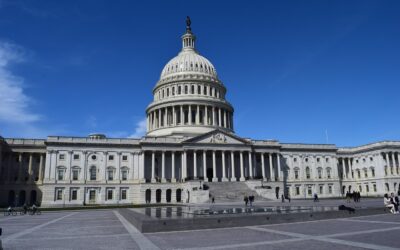It would be difficult to think of any type of contracting or technology solution that could not find an immediate implementation opportunity somewhere in the United States today. Project launches scheduled to start through 2023 and 2024 ‘cover the waterfront’ and they all require construction, engineering, security, landscaping, all types of technology and more. The diversity in the types of projects along with the available funding is historic.
Public officials often want to know how other governmental officials are using federal, state and local bond funding. Companies that contract with the government also want to know more about projects that are currently in the planning phases. Since the research team at SPI follows upcoming opportunities in every state and at every jurisdiction, today’s column is committed to highlighting some of the unique types of contracting opportunities that will soon launch.
The following projects that are described are not happening in just one state – they represent dozens of similar projects in numerous states that are currently in planning phases. It is easy to forget that the U.S. government marketplace is the ‘largest market in the world’ but it is important NOT to forget because this marketplace is inflation resistant and continually expanding.

Cities are taking advantage of the fact that federal funding is available in abundance for public assets such as zoos. City leaders in Tulsa, Okla., have a $37.6 million budget for upgrades to the public zoo. This communal asset provides services to approximately 700,000 visitors a year and the expansion is designed to attract and accommodate many more visitors. It has proven to be a revenue generator for the city, a job creator for the region, a coveted tourist attraction, as well as an educational facility for students. The current petting zoo has been budgeted for $24.8 million in funding. This initiative will also include a new education building and a new primate forest. Private sector needs in addition to construction will also include high demand for specialized expertise in projects of this type.
School districts throughout the country have huge construction projects of all types. The Quaker Valley School District in Pennsylvania has a budget of $99 million and hopes to start construction on a new school facility during the first quarter of 2024. The cost projections are likely to increase, as suggested by the district’s program manager, because the project also includes a 1,000-seat gymnasium, a 650-seat theater, a cafeteria, administrative offices and possibly other campus projects.
Hundreds of other school districts have funding for larger initiatives. A unique plan to create a partnership and a new program that involves Salem City Schools, Roanoke College and Virginia Western Community College in Pennsylvania is taking shape. The budget allocated is $192 million. The plan is to create a dual-enrollment program for at-risk high school students and give them a jump on college and careers.
A $91 million allocation is available for construction of a new middle school for the Princeton Independent School District in Texas. However, voters have approved $797 million to build eight new campuses to address the area’s continued growth. The new middle school will be the first project with others following over the next six years.
Economic development initiatives are ready to roll out in multiple states and most involve projects that will attract tourism or new industry locations. The most common component in all these types of projects seems to include parks, trails, entertainment venues and affordable housing near public transit stations. Many of the projects are structured to include retail development around the dedicated locations. Numerous cities are launching large initiatives to invigorate downtown growth with new convention centers, performing arts venues and providing an abundance of affordable housing options.
University campuses are also a common location for revenue-producing opportunities. The University of Texas now houses one of the highest revenue-generating entertainment venues in the nation. The Moody Center, which was delivered through a public-private partnership engagement, is a revenue generator for the institution. It not only hosts concerts and entertainment presentations at the Center, it also hosts all university basketball games.
Other funded projects that are somewhat unique include intelligent infrastructure initiatives and smart city projects. Both have a high demand for leading-edge technology such as artificial intelligence (AI) and big data offerings of various types.
Collaborative initiatives in the last decade were led by visionary public officials and are usually delivered through public funding. Today, however, many of the most innovative projects are being made possible by visionaries from both the public and the private sector. When that happens, taxpayers are spared the full cost of modernization, the renovation of public assets and upgrades to critical infrastructure.







